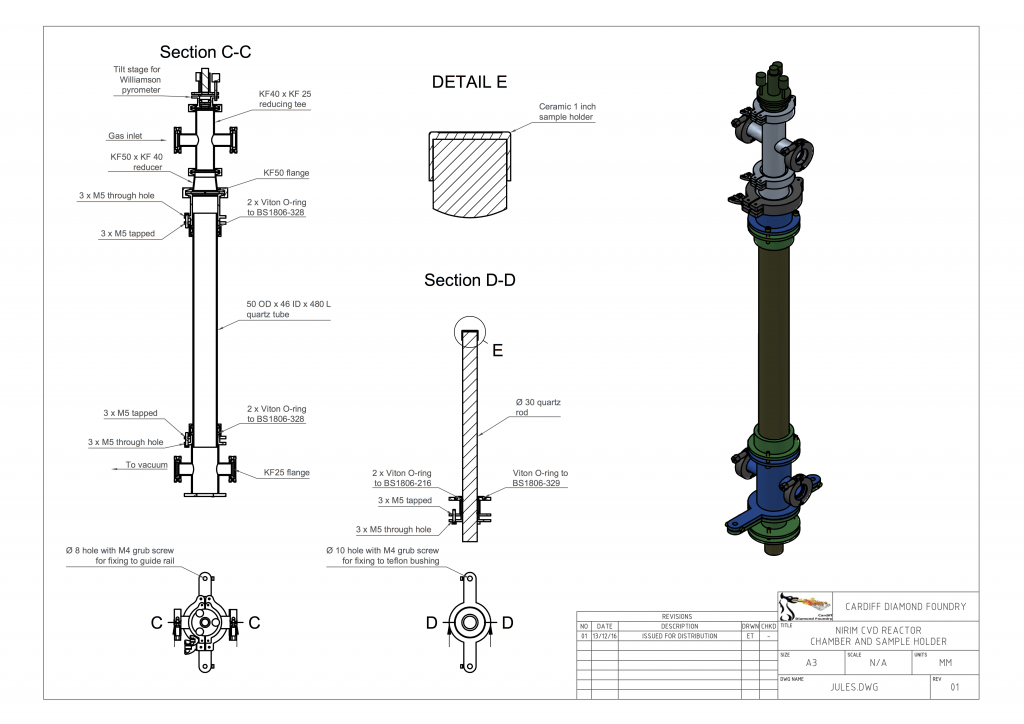Introduction and Objectives
New Brunswick Community College and Camosun College
Introduction
It would be almost impossible for an engineer, technologist, or architect to completely describe in words the shape, size, and features of a complex object. Technical drawings have become the universal language used by engineers, technologists, technicians, as well as craftsmen, to communicate the information necessary to build, assemble and service the products of industry.
The drawing show below is a formal CAD representation of a chemical reactor at an industrial diamond factory. A lot of information is conveyed in this drawing – there is an 3D rendering and a couple of sectional views. Annotations are added to show dimensions and descriptions of special features.

Less formal technical drawings are sometimes sketched by hand and incorporated into notes as a means for recording observations taken at a field site, or to support a complicated mathematical analysis of lab results, such as show below. While different from formal CAD drawings these sketches share the same basic features such as symbols, line types, dimensioning, and annotation techniques, of their more formal equivalents.

Some of the most important documents used in the workplace are technical drawings, sketches, and schematics and it is essential for anyone involved in a technology or trade be able to correctly interpret and create drawings. If you are in a construction or fabrication industry, you will need to be able to examine a drawing, take information from it, and visualize the finished product. If you are in a service or maintenance industry, you will need to interpret exploded drawings in order to properly repair or assemble equipment. If you are a technician or technologist you will need to be able to visit field sites and draw sketches to communicate what you observe to others on your team.
Objectives
- Read and interpret drawings and sketches
- Observe objects and situations with an eye to identifying important features
- Recognize and identify basic terms, components, symbols, and lines used in drawings
- Describe different types of drawing projections
- Produce annotated sketches of objects and situations
- Write legible notes

